Lowercase identification Alphabet Worksheets for Ages 3-5
5 filtered results
-
From - To
Introduce your little learners to the exciting world of letters with our Lowercase Identification Alphabet Worksheets designed for ages 3-5! These engaging worksheets are perfect for preschoolers as they develop essential skills in recognizing and identifying lowercase letters. Featuring colorful illustrations and interactive activities, children will enjoy tracing, coloring, and matching letters in a fun and imaginative way. Our carefully crafted resources support early literacy development, enhance fine motor skills, and encourage a love for learning. Explore the joy of the alphabet with these printable worksheets, perfect for home or classroom use. Help your child build a strong foundation for reading today!
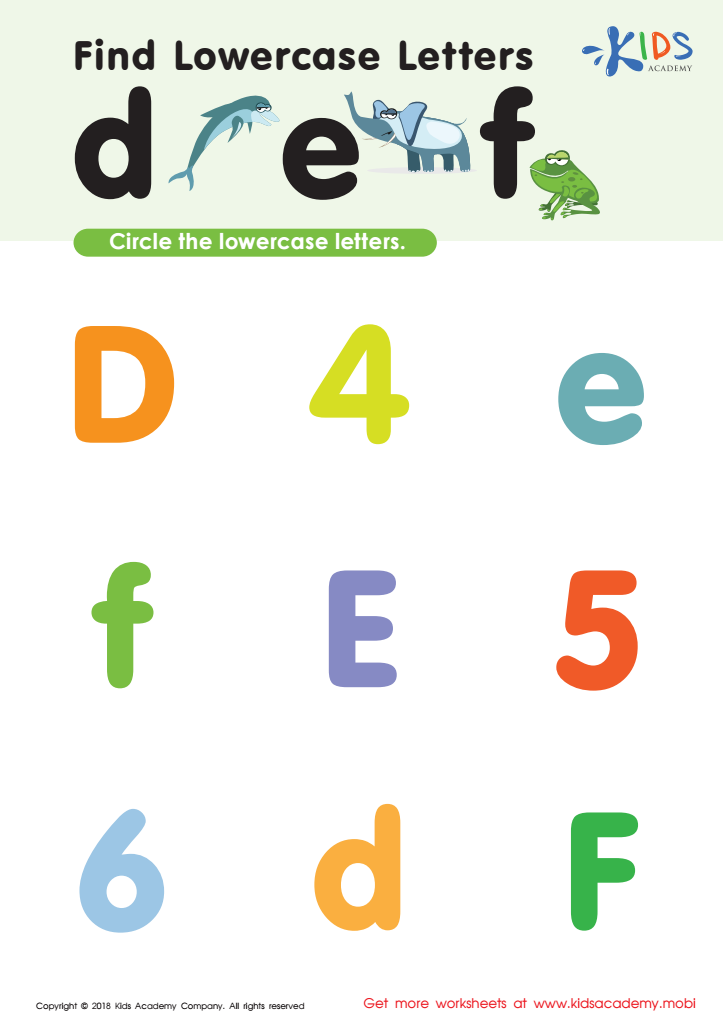

Find Lowercase Letters d e f Worksheet
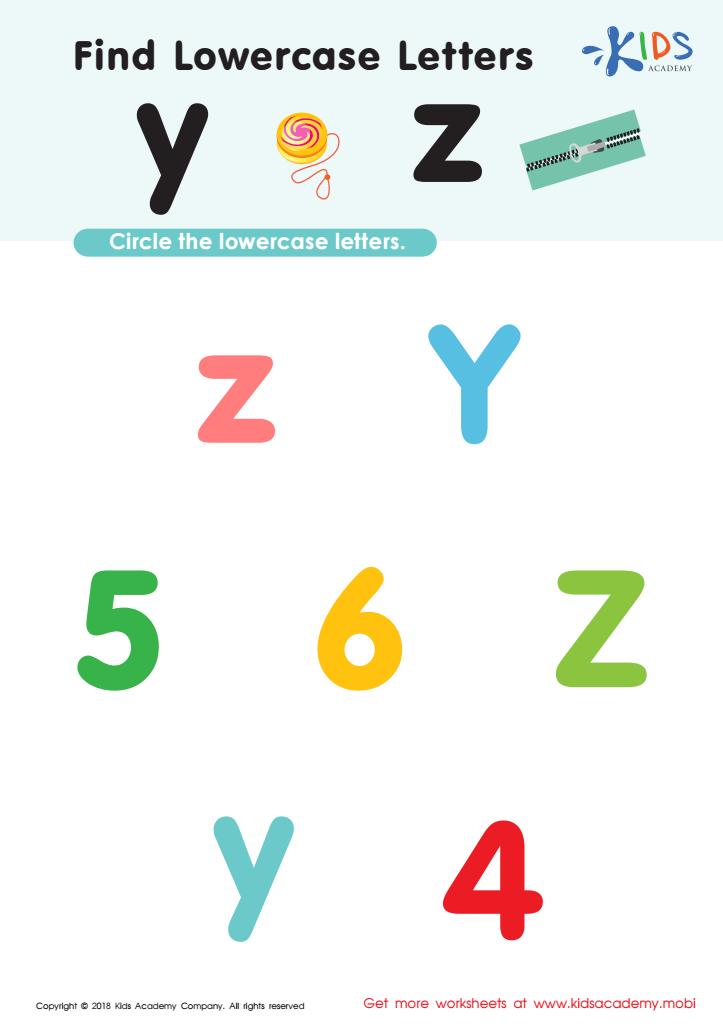

Find Lowercase Letters y z Worksheet
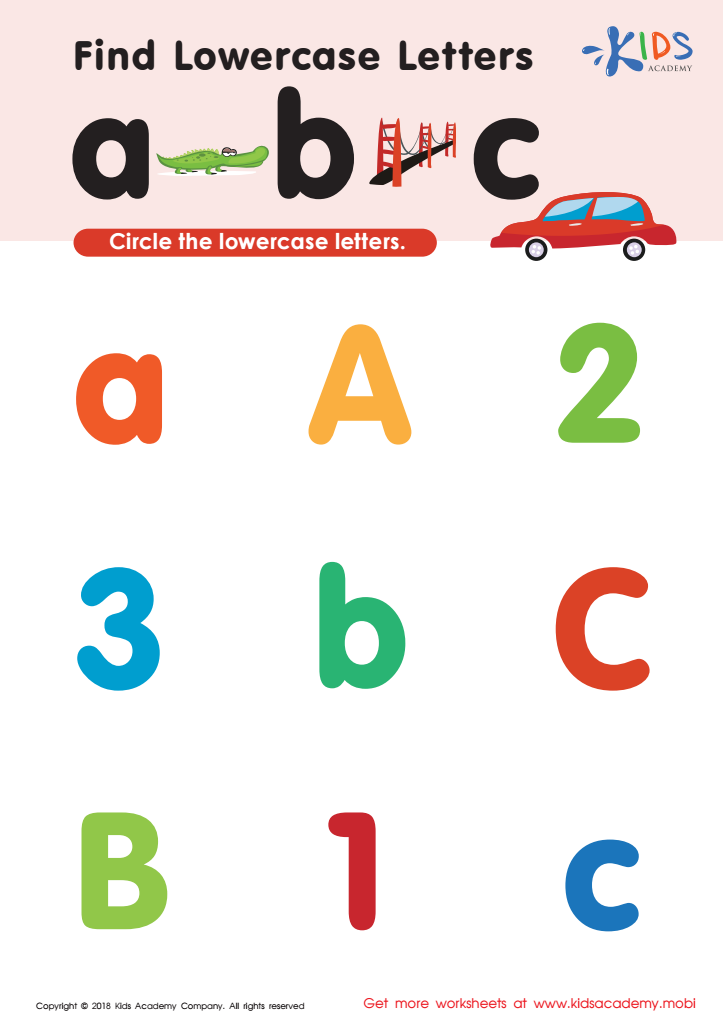

Find lowercase letters a b c Worksheet
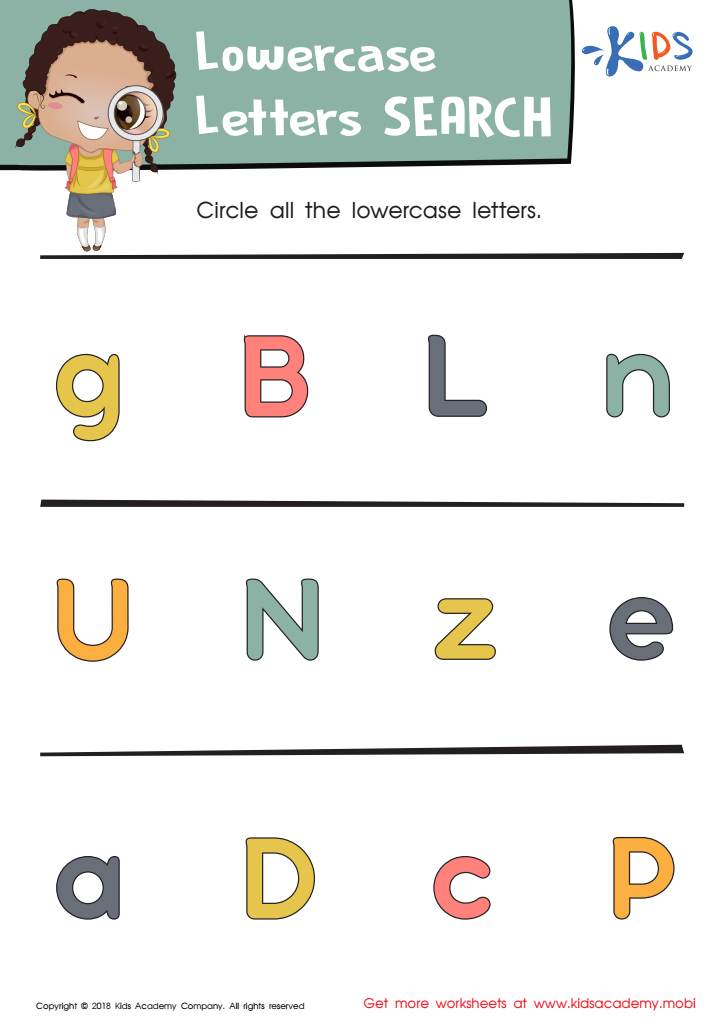

Lowercase Letters Search: Assessment Worksheet
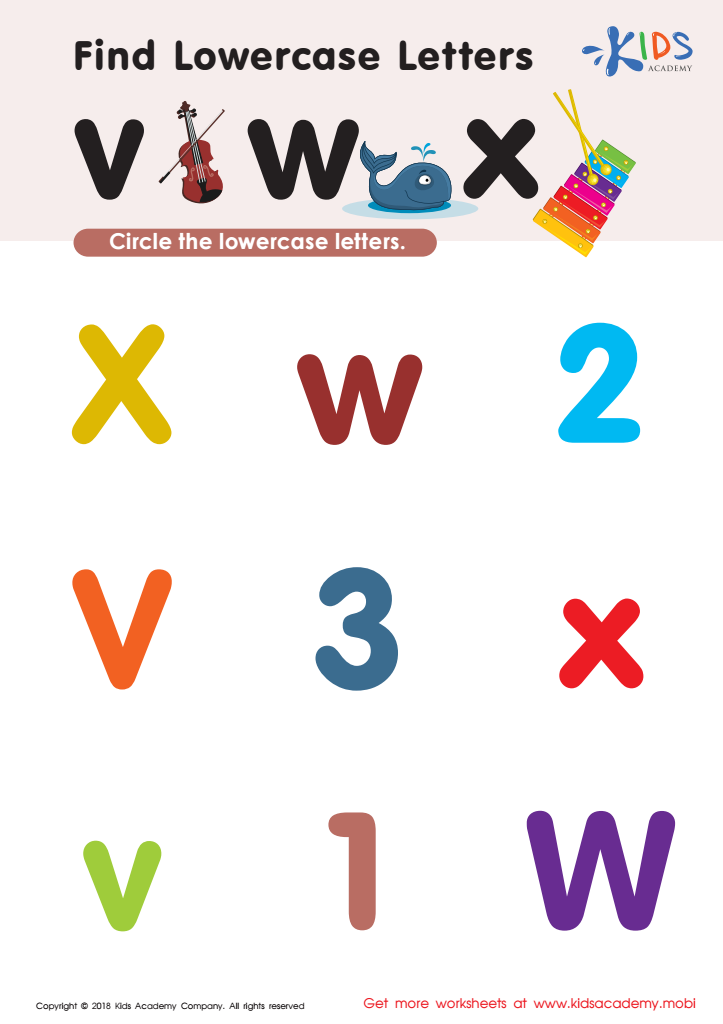

Find Lowercase Letters v w x Worksheet
Lowercase letter identification is crucial for children aged 3-5 as it lays the foundation for reading and writing skills. Understanding lowercase letters helps young learners recognize the most common form of written language they encounter daily, as most texts are composed of lowercase letters. Mastery of lowercase reading paves the way for fluency in reading, giving children the confidence to engage with books and other reading materials.
Furthermore, familiarizing children with lowercase letters facilitates better handwriting development. Early exposure to writing lowercase forms allows children to practice the correct letter formation and improve their fine motor skills, integral for their overall academic growth.
Parents and teachers should actively encourage lowercase letter recognition through engaging activities such as games, songs, and everyday discussions. Such interactive approaches cater to the child's natural curiosity and make learning enjoyable, fostering a love for literacy.
Moreover, recognizing lowercase letters lays the groundwork for differentiating between uppercase and lowercase forms, which is essential for reading comprehension. By supporting lowercase identification, parents and teachers play a pivotal role in nurturing skilled, confident readers and writers, ultimately enriching children's educational journey and lifelong learning.

 Assign to My Students
Assign to My Students








.jpg)











